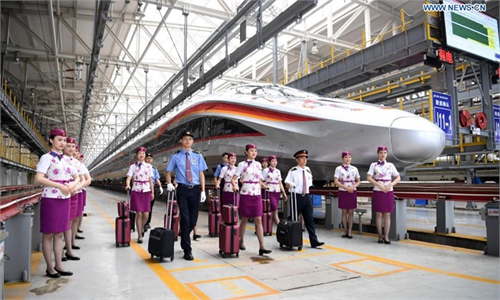Fuxing bullet train debuts on Qinghai-Tibet Plateau, covers all 31 mainland provinces
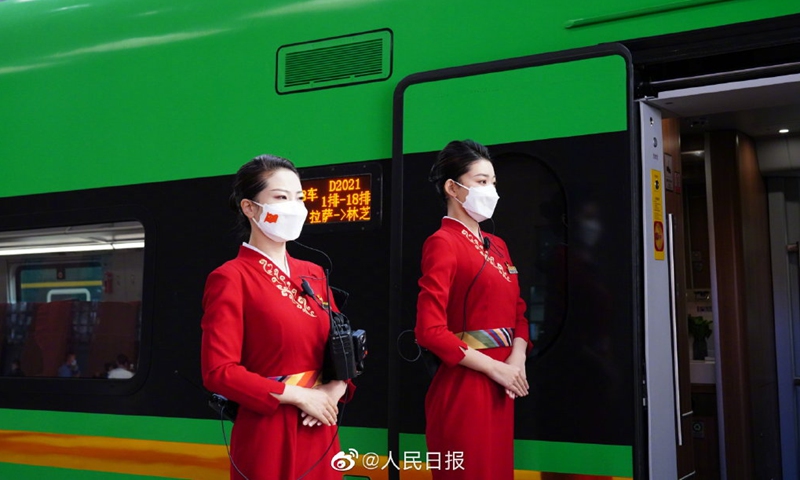
Photo: People's Daily
The Lhasa-Nyingchi railway in Tibet Autonomous Region started operation on Friday, marking China's most advanced Fuxing bullet train to run on the Qinghai-Tibet plateau for the first time, to better connect Tibet to other provinces and regions and will boost the local economy, observers said.
The line is 435.48 kilometers long, and the train has a maximum speed of 160 kilometers per hour. It passes through the Yarlung Zangbo River16 times and 90 percent of it are 3,000 meters above sea level.
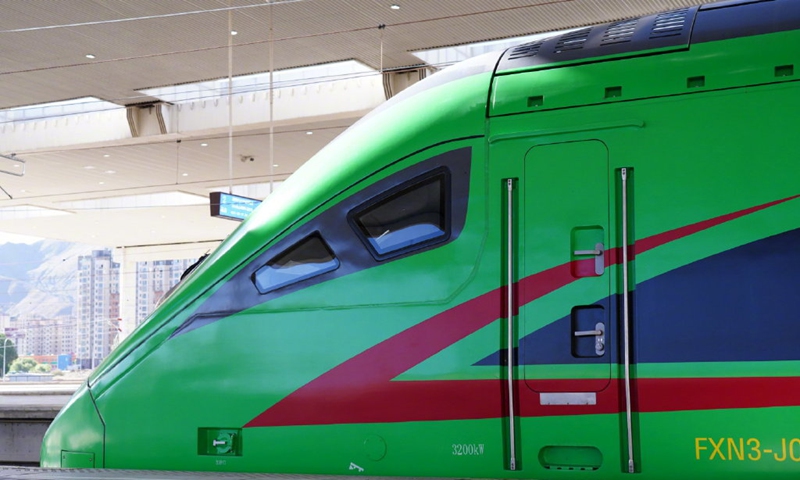
Photo: People's Daily
The Fuxing train now reaches all 31 mainland provinces, autonomous regions and municipalities.
Technically, the Lhasa-Nyingchi Railway addresses the limitations in existing modes of transportation, which were vulnerable to the plateau's climate, a further improvement to the region's transportation network, according to CNRG.
Economically, the railway will further enhance Tibet's status in the national railway network, help it become a driving force in the region's economic development, and greatly promote the opening of Chengdu and Chongqing to the west, Sun Zhang, a mass transit expert and professor at Shanghai Tongji University, told the Global Times on Friday.
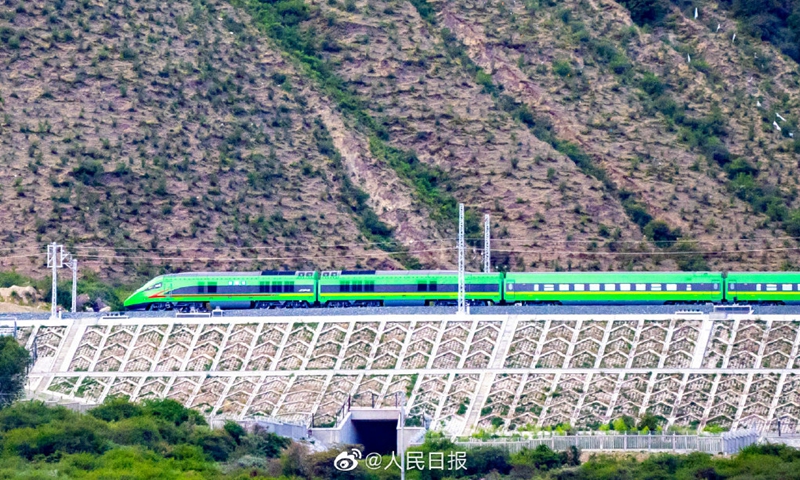
Photo: People's Daily
Tourism, culture, religion and other natural and cultural resources along the Lhasa-Nyingchi Railway are rich, and they contain huge potential for economic development. But in the past, due to traffic constraints, the development of tourism resources along the line was limited.
Before the new line, there was only the Qinghai-Tibet Railway, connecting Xining in Northwest China's Qinghai Province to Lhasa, but the section takes about 21 hours and passes through the Tangula Mountains, which is more than 5,000 meters high.
The new line saves time to Lhasa and helps prevent altitude sickness.
A tourist who went to Tibet twice surnamed He told the Global Times on Friday that the new line encourages her to travel more to Tibet, her favorite destination.
After the Sichuan-Tibet Railway was opened, the distance from the roof of the plateau to the Chengdu-Chongqing economic zone located in the upper reaches of the Yangtze River also felt "shorter."
Most previous poverty-stricken areas in Tibet are located in places with relatively backward transportation and other infrastructure, hindering the region's development. The Lhasa-Nyingchi railway will help to further narrow the development gap between the east and west of China, unleashing a greater potential for the development of the west, Hong Tao, director of the Institute of Business Economics at the Beijing Technology and Business University, told the Global Times.
The line will also greatly boost the utilization and transformation of energy resources and greatly improve the livelihood of the people in the region, experts said.
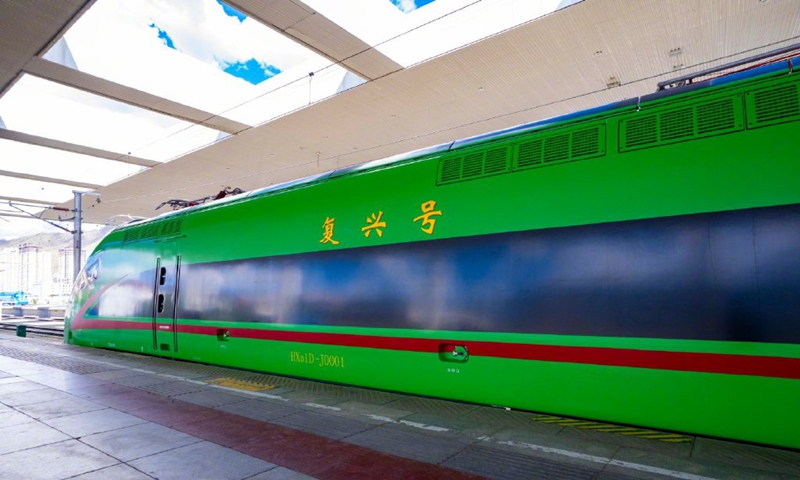
Photo: People's Daily
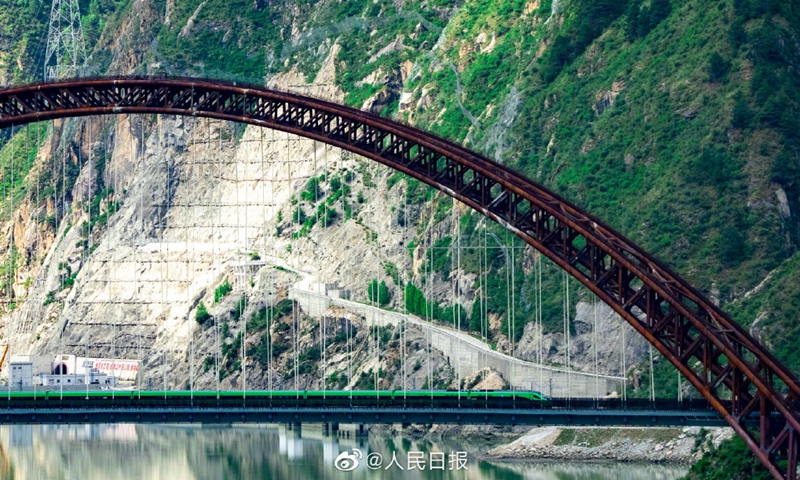
Photo: People's Daily
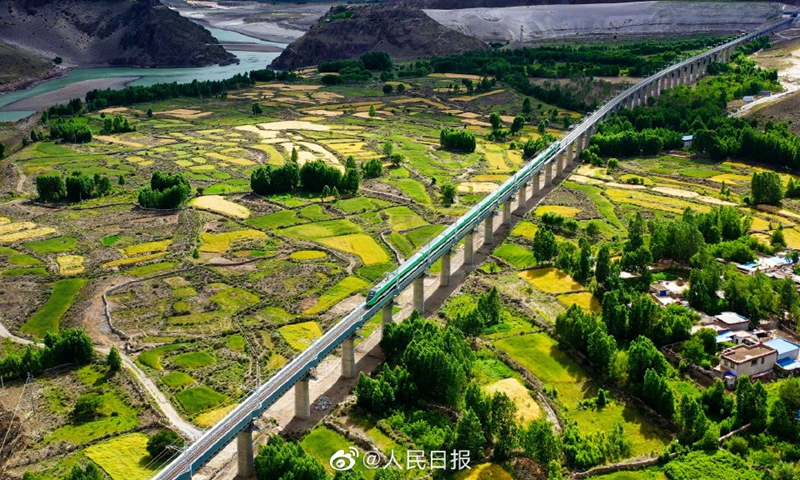
Photo: People's Daily
